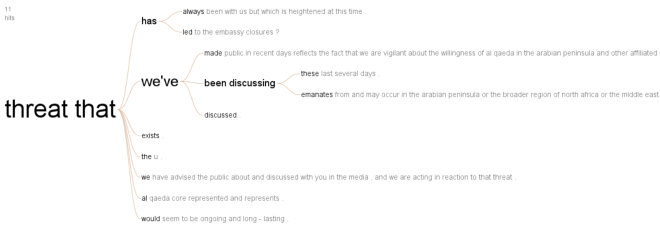In this post, I’m using a corpus of postings on Facebook by supporters of the EDL to study how women are constructed in far-right discourse. I’m using Sketch Engine, and in particular Word Sketch, a function which provides detailed collocational information of search words.
This post focuses on the words woman and women. When I looked at collocates which are the object of woman / women, the following table was obtained:
The collocates appear to suggest a high degree of negativity associated with women, a great deal of violence and oppression as the collocates include: rape, treat, attack, stone, cover abuse, assault, oppress, hate, marry, insult, see. Other collocates not shown above include force and beat, which further empathize the discourse prosody of violence, oppression and victimization which is associated with women in discourses produced by members and supporters of far-right ideology
In this post, I’ll focus on the concordance lines of the more frequent collocates.
The concordance lines present a certain amount of context to the collocational information. In the first set of concordance lines there appears to be a discussion as to whether white men rape women, or whether this can be an issue for which Muslim men are solely responsible. The notion that women are victims appears to be accepted. The second set of concordance lines construct women as being treat badly by Asian men, and the third set depicts women as being defenseless and victims of physical attack.
Word Sketch can also provide information of the modifiers of search words. The most common modifiers of women are as follows:
Both white women and Muslim women are constructed as victims. White women are constructed as victims of rape, whereas Muslim women appear to be constructed as the victims of oppression by Muslim men.
The depiction of women as victims, primarily of violence by Muslim men and Muslim culture, positions male supporters of the EDL as defenders of women and consequently of values and traditions of English culture.























